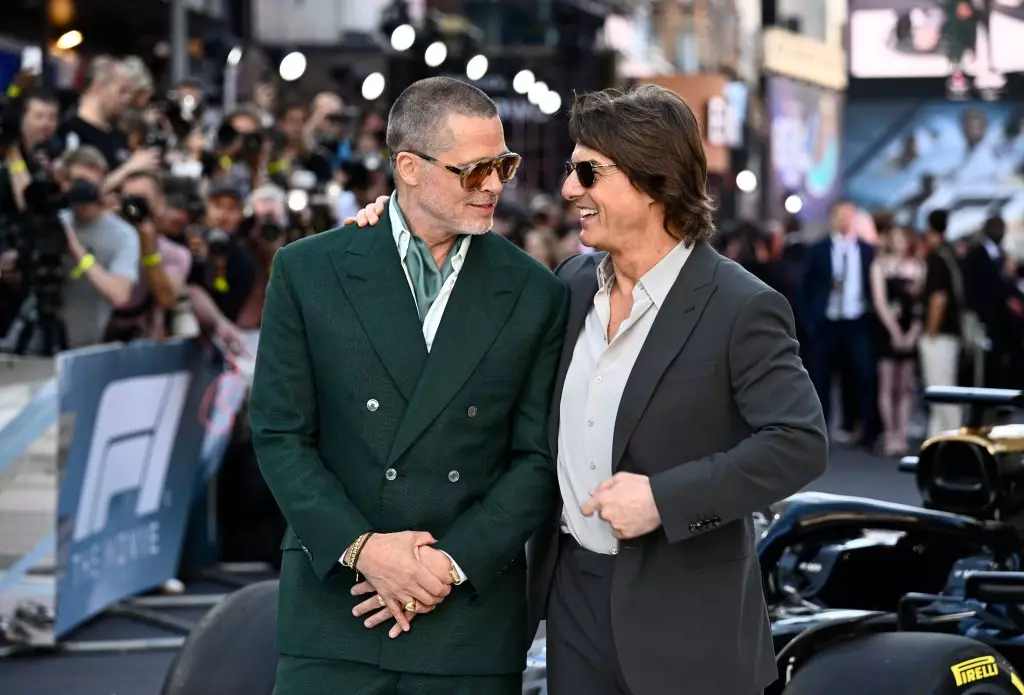In the high-octane world of cinematic racing dramas, the story of Ford v Ferrari exemplifies how industry hurdles and creative differences can impede even the most promising projects. Initially, Hollywood stars Brad Pitt and Tom Cruise were linked to the project, with director Joseph Kosinski at the helm. Their involvement was set to propel the film into a stratosphere of excitement, but ultimately, the project derailed before reaching the finish line. This early planning stage reflected a confluence of star power and ambitious storytelling, yet it was scuttled by internal studio reservations and budget concerns. Such setbacks are emblematic of Hollywood’s often unpredictable nature, especially when it involves big-budget films closely tied to real-world motorsport.
Pitt’s reflection on this unreleased project reveals a nuanced understanding of what might have been, emphasizing a shared desire to portray authentic racing passions. Both he and Cruise, passionate about driving, envisioned themselves in roles that embodied their racing aspirations—Cruise as Shelby and Pitt as Ken Miles. However, when key character dynamics, particularly Shelby’s limited on-track presence, surfaced as potential obstacles, the project lost momentum. This intersection of star ego, character focus, and logistical hurdles underscores how passion alone cannot overcome the nimbleness required to bring such complex stories to life.
The 2019 Milestone and the F1 Connection
Instead of pursuing the original Ford v Ferrari project, the industry witnessed the release of the critically acclaimed 2019 film, directed by James Mangold. Christian Bale’s riveting performance as Ken Miles and Matt Damon’s portrayal of Carroll Shelby created a compelling narrative fused with adrenaline and emotion. The film not only became a box office success but also ignited discussions about its sequel potential, with Kosinski openly stating that public interest should decide its fate.
This new chapter in racing cinema—focused on Formula 1—marks a significant shift from the Ford v Ferrari roots. It reflects Hollywood’s evolving appetite for stories that blend high-speed spectacle with personal struggle and rivalry. Interestingly, Pitt expressed his keenness to return to such cinematic races, emphasizing his love for the sport and desire to portray authentic driving experiences. His comments reveal an actor’s genuine obsession with the craft, and perhaps more importantly, highlight the ongoing popularity of racing movies that resonate with audiences seeking thrills and emotional depth.
The Challenges of Authenticity and Audience Engagement
One constant theme in racing films is balancing spectacle with authenticity. Kosinski’s commentary about budget constraints hampering his vision for a Ford v Ferrari sequel echoes a broader industry challenge: How to deliver high-stakes motorsport entertainment without breaking the bank? The fact that the original project was shelved due to studio objections underscores a crucial point—massive racing events are inherently expensive to produce, especially when striving for realism. Nonetheless, the success of the 2019 film demonstrates that with strategic investment and creative storytelling, racing movies can succeed at the box office and in the hearts of fans.
Pitt’s openness to participating in a future F1-themed sequel indicates that the genre has staying power. His focus on character development and team rivalry suggests that modern racing films are less about cars racing and more about human drama, resilience, and rivalry. The potential to explore new narratives, perhaps set against the glamorous yet perilous backdrop of Formula 1, offers a rich canvas for filmmakers seeking fresh stories to captivate audiences worldwide.
The Future of Racing Cinema: Beyond the Finish Line
Ultimately, the intertwining ambitions of Hollywood stars, visionary directors, and passionate fans shape the future of racing movies. While projects like the original Ford v Ferrari may remain on the shelf, the current landscape offers fertile ground for innovative storytelling. The success of recent films proves that audiences crave visceral experiences rooted in real human emotion, adrenaline, and the universal allure of speed.
Pitt’s comments about potential sequels and his desire to “drive again” reflect a deeper truth: racing cinema is not merely about cars racing at breakneck speeds, but about the human spirit’s relentless pursuit of greatness. As filmmakers navigate the obstacles of budget and logistics, they must also remain faithful to the essence of what makes racing stories compelling—perseverance, rivalry, and the indomitable desire to push beyond limits. The road ahead is uncertain, but if history teaches us anything, it’s that passion, when sparked correctly, always finds a way to accelerate to the finish line.
